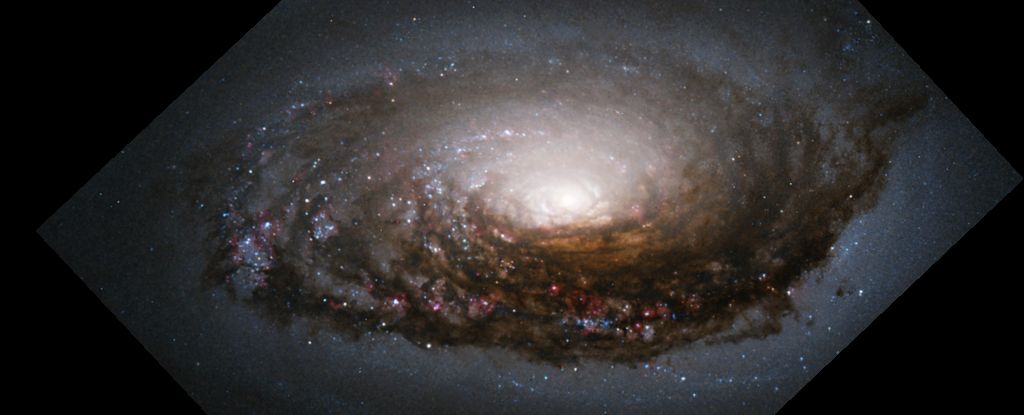M64, also known as the Evil Eye galaxy, is a peculiar galaxy that has long puzzled astronomers. Its outer disk of hydrogen-rich gas rotates in the opposite direction to its inner disk of stars, indicating that they may have different origins. However, recent research has shed light on this mystery. Astronomers using the Subaru telescope’s Hyper Suprime-Cam have discovered that the outer disk’s hydrogen gas came from a smaller, gas-rich satellite dwarf galaxy that M64 recently absorbed and wrapped itself in. This smaller galaxy’s material is darkening M64’s outskirts, giving it its sinister appearance. The findings suggest that M64’s unique counter-rotating disk was the result of a recent merger with a gas-rich satellite dwarf galaxy similar to the Small Magellanic Cloud.
Glimpse into the Future
Galaxy mergers are a crucial part of galaxy growth and evolution. They increase the mass of a galaxy and infuse it with new material and gravitational interactions that increase star formation, keeping the galaxy alive with new generations of stars. The Milky Way has merged with other galaxies multiple times over its long history, and other galaxies in the universe are at various stages of the merger process. The discovery of the origin of M64’s outer disk could give us a glimpse into the future of our own Milky Way. Estimates of the mass and contents of the shredded satellite suggest that it was remarkably similar to the Small Magellanic Cloud, a Milky Way satellite dwarf galaxy that will one day be subsumed into the larger mass.
The researchers found evidence of a galactic halo, a diffuse sphere of dark matter, gas, and stars that encapsulates spiral galaxies, which is thought to form and grow through galaxy mergers. They also found evidence of a shell, a density of stars produced through the gravitational interaction between two merging galaxies. Comparison with simulations showed that the distribution of the shell around M64 is consistent with what is known as a “minor” merger; that is, the absorption of a satellite dwarf galaxy by the larger host.
To confirm this scenario, the researchers used data from Hubble to estimate the mass and composition of the absorbed galaxy. They derived a stellar mass of around 500 million solar masses, consistent with the 300 million to a billion solar masses of the Small Magellanic Cloud. The mass of the hydrogen disk around M64 is also around 500 million solar masses, which again, the researchers say, is consistent with the 400 million solar masses worth of gas in the Small Magellanic Cloud. Together, the clues seem to point pretty convincingly at galactic cannibalism, recently enough to have left these traces – within the last billion years.
The motion of the gas suggests that the satellite dwarf galaxy had a partially retrograde orbit around M64. The dusty center and dark smudges of dust are the result of the ongoing merger as material collides with M64’s inner disk of gas. The researchers suggest that the outer gas disk was accreted recently during a 52:1 merger with a Small Magellanic Cloud-mass galaxy and is now colliding with an existing inner gas disk, fueling a burst of star formation at the disk-disk interface and driving the visible dust lanes from which it earns its name. Future observational and theoretical studies will help test this idea.
The discovery of the origin of M64’s outer disk has implications beyond understanding the galaxy’s formation and evolution. It can also help us understand how stellar halos are formed. Being able to calculate the previous orbital motion of a now-consumed satellite galaxy could help reproduce M64’s halo evolution, providing valuable insight into the growth of these mysterious structures.
The discovery of the origin of M64’s outer disk has given us a glimpse into the future of our own Milky Way and provided valuable insight into how galaxies grow and evolve. The evidence points convincingly at galactic cannibalism, and future studies will help us further understand this process. Ultimately, this discovery highlights the importance of continued research into the mysteries of our universe.



Leave a Reply